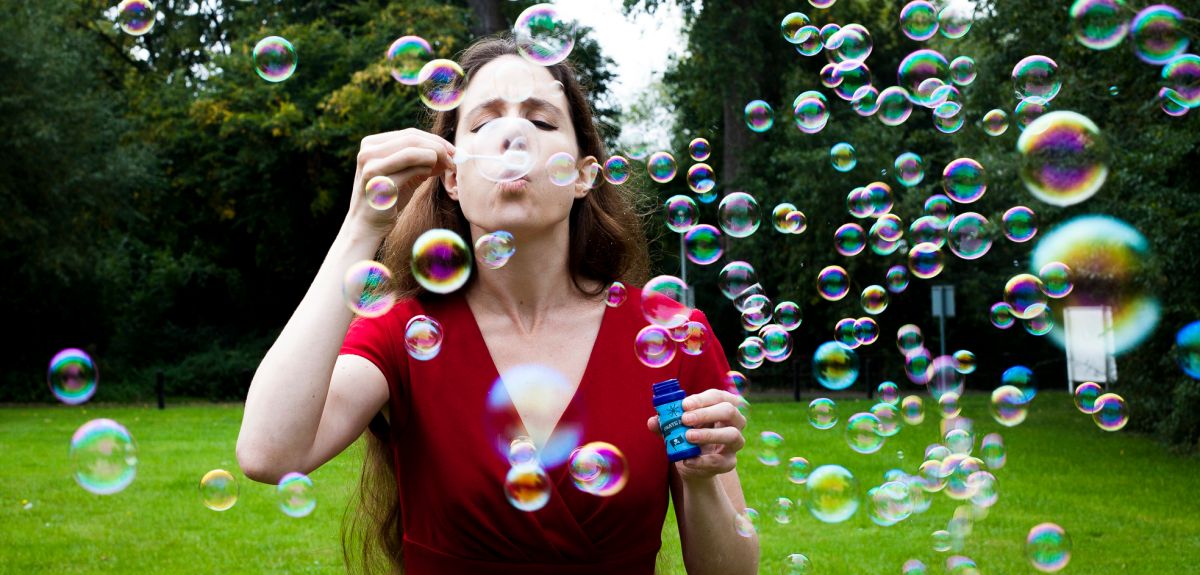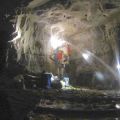
Image courtesy of Borntoengineer and duckrabbit.
Bubble research rises to the top
Earlier this year, Professor Eleanor Stride from Oxford University's Institute of Biomedical Engineering won the 2014 IET A F Harvey Engineering Prize.
The £300,000 prize, given by the Institute of Engineering and Technology (IET), recognizes Professor Stride's work using microbubbles for targeted drug delivery, an innovation which aims to avoid the side-effects of current treatment for diseases such as cancer.
Sir John O'Reilly, Chair of the IET's Selection Committee for the Prize, said: 'Professor Stride's research in drug delivery and biomedical ultrasonics is an excellent example of the innovation that can be achieved from the cross-fertilisation of engineering and biomedical sciences.'
I caught up with Professor Stride to talk to her about her research interests, and where her research is headed in the future.
OxSciBlog: Bubbles have been a common theme in your research career - why are they so interesting?
Eleanor Stride: The bubbles we use in our research are very similar to the soap bubbles you would have blown when you were a small child: a sphere of gas caught in a thin film. We use something a little bit more bio-compatible than washing-up liquid though, and our bubbles are about a 100 times smaller than a human hair. They are fantastic in many, many ways.
I first got interested in their use in a completely different area: I was working as a mechanical engineer during my undergraduate degree, imaging oil pipes to try and increase the yield of oil. In order to figure out what was going on inside these oil pipes, we needed a non-invasive tracking system. Bubbles are great for this, since they produce a strong echo from ultrasound. So we bubbles to track the flow in the oil pipes.
My supervisor then had a completely serendipitous meeting with a radiologist, who turned out to be doing something very similar in the body to track blood flow. We agreed that this was a much more interesting problem, and it also didn’t involve travelling to oil rigs!
So I moved from imaging oil pipes to imaging in the human body. This turned out to be the start of my Ph.D.
One of the very exciting developments in the early 1990's was the realization that the ultrasound could not only be used to track micro-bubbles, but also as a means to deliver drugs. So you have a tiny bubble containing both gas and a drug, that can be used as a drug-delivery vehicle.
OSB: Why are these microbubbles better than traditional methods for getting medications into people?
ES: The conventional way of delivering a drug is to give it as a pill, or inject it into the bloodstream. In either case, the drug eventually ends up in the bloodstream, and the entire body is exposed to it.
This is fine if you’re trying to treat quite a diffuse condition, but for conditions like cancer or stroke, we'd ideally like to target the drug as much as possible to the disease site only. This is because these drugs are very powerful, and can therefore have many side-effects.
What a micro-bubble allows us to do is to put the drug inside the bubble, which means that the drug won't react with any cells in the body until we activate it. So we now have a means of controlling where a drug is released, which means fewer side-effects.
OSB: How do know you when the microbubbles are at their target, and how do you activate them once they are in position?
ES: We use ultrasound for both: since the bubbles produce a strong echo on ultrasound images, we can track their progress.
Secondly, since the bubbles are filled with a gas, they're compressible. Ultrasound is basically a varying pressure wave. This means that when the bubbles are exposed to ultrasound, they alternatively expand and contract. If you turn up the ultrasound power enough, the bubbles will eventually rupture, releasing their contents. So by varying the ultrasound power, we can control when the drug is released.
The other intriguing effect is that this process seems to make cells themselves more permeable: not only are we releasing the drug, but were also helping it get into the body’s cells. We don't completely understand the mechanisms for this increase in permeability. It may be an effect of ultrasound alone, and the bubbles just focus that effect, but it is more likely to be the combination of the ultrasound and the bubble: the motion of the bubble may be setting the liquid around it into motion, and this might be having a shearing effect on the cell-membrane. Or the contact between the moving bubble and the cell membrane might be the crucial mechanism. We're still trying to understand what is going on here.
OSB: Amongst many others awards, you've previously also won the 2010 Venture medal from The Worshipful Company of Armourers and Brasiers, an organization probably less familiar to most readers. What was this prize for?
ES: That was for another project, treating urinary tract infections (UTIs) by improving delivery of antibiotics.
UTIs are a huge problem, especially in the elderly population, where a significant proportion of cases becomes chronic. Oral antibiotics are no longer effective for these patients, so dosages have to be stepped up. The side-effects of the drugs then start to exacerbate the infection itself.
We have been working with our clinical collaborators to develop a way of encapsulating antibiotics so that they are released very slowly over time. This means that a concentrated dose of antibiotics could be delivered slowly and locally to the bladder wall, without exposing the whole body to these high doses.
OSB: What sort of work do you plan to do with the new funding from the IET prize?
ES: One of our big challenges in working with microbubbles is actually making them.
The state-of-the-art is not all that far removed from a cappuccino machine: we bubble a gas and the drug we want to encapsulate into a liquid containing the material that we want the bubbles to be coated with, and we then agitate this mixture using ultrasound to generate a foam (a process known as sonication). We then extract microbubbles from this foam.
We can't control the size of the bubbles or the amount of the drug each bubble contains via this method: it's very quick, but a very crude process.
The grant from the IET prize is to develop a new device that provides the speed and stability offered by commercial industrial processes with the precise control over bubble properties offered by lab based techniques. Making tiny bubbles through this combined ‘microfluidic-sonication’ process will allow much better control of the size and properties of the bubbles we use.
We want to have the best of both worlds!
Professor Stride gave the A F Harvey Prize Lecture on 21 May 2015 at the Royal Society of Medicine in London.
 Seashells and sediment: measuring oxygen
Seashells and sediment: measuring oxygen  Coming Soon: the Universe in 3D Widescreen
Coming Soon: the Universe in 3D Widescreen Economic games don't show altruism
Economic games don't show altruism Can science find the right diet for you?
Can science find the right diet for you? Ancient waters expand search for 'deep life'
Ancient waters expand search for 'deep life'